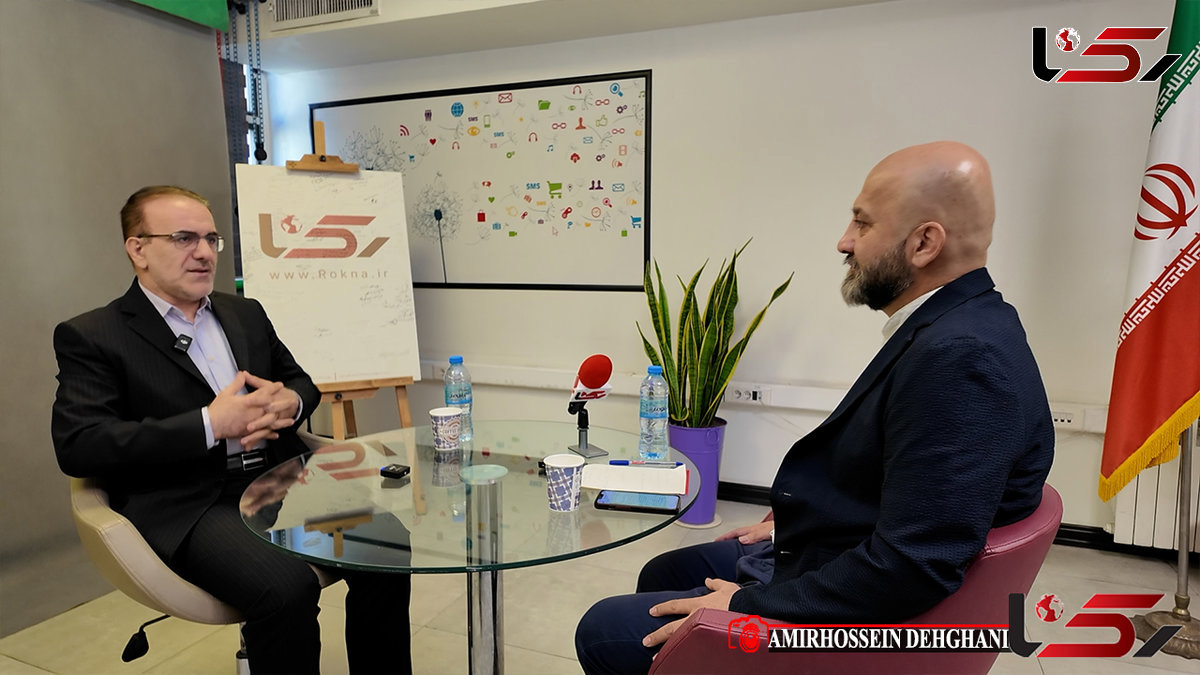Exclusive Rokna Interview on “Rok” with Dr. Mohammad Raiszadeh, Head of the Iranian Medical Council
Dr. Mohammad Raiszadeh: “Ordering a Coffin for Medical Education in Iran” + Video
Rokna Social Desk: In the second episode of Rokna News Agency’s video program “Rok,” an in-depth and candid interview was conducted with Dr. Mohammad Raiszadeh, head of the Iranian Medical Council. The discussion focused on the rapid expansion of medical school admissions and the potentially irreparable damage this trend is causing to Iran’s healthcare system.

During the interview with host Afshin Amirshahi, Dr. Raiszadeh addressed the controversial topic of increasing medical student capacity in universities.
Afshin Amirshahi: One of the deep-rooted issues in the country is the medical education system itself. Various organizations and individuals, both directly and indirectly, intervene in this sector. These interventions are not limited to institutional actors but are often embedded in legal frameworks that grant certain bodies the authority to determine quotas and even the number of medical students in universities. For instance, the Supreme Council of the Cultural Revolution plays a significant role in medical education policy, whether intended or not. From your perspective, what is the solution?
Dr. Mohammad Raiszadeh: The Council’s recent involvement in determining medical school capacity and education quality has often been excessive and sometimes harmful. Although previous dialogues with the Council’s secretariat were candid, a fundamental question remains: When the Supreme Leader’s health policy directives clearly assign responsibility for education, evaluation, and treatment to the Ministry of Health, why should the Council intervene so directly in setting capacities and standards?
The Ministry of Health possesses the necessary infrastructure, expertise, and operational experience. There is no justification for the Council to insist on dictating every detail, including the number of medical admissions. The outcome of such interventions has been chaos in medical education and erosion of quality.
Consider the statistics: Tehran University of Medical Sciences admitted its first medical students in 1934, and over 87 years, national capacity grew to around 8,000 students per year. Yet in the past four years, this figure has doubled to 16,000. Has a miracle occurred? Were dormitories, faculties, hospital beds, anatomy labs, or faculty members expanded proportionally?
Amirshahi: Perhaps the justification is that more doctors are needed in underserved regions.
Dr. Raiszadeh: That analogy fails. Just as energy cannot be increased by decree alone, medical training cannot be doubled overnight without infrastructure and planning. We now face a phenomenon I call “accumulated medical degrees without competence”: many individuals carry the title of doctor but are not fully trained physicians.
Some universities have increased intake from 200 to 800 students. Large class sizes prevent proper attendance monitoring and discipline. Students have realized that “no one fails,” and faculty fear managing the classroom. This is a collapse of educational order and prioritization of quantity over quality.
Once a source of national pride, Iranian medical education now risks a serious crisis. Instead of enhancing quality, it is heading toward superficiality and commercialization.
Recent cabinet legislation under Article 69 of the Seventh Development Plan allows the Ministry of Health to use private sector capacity to compensate for shortages. However, given severe infrastructure deficits in public institutions—33,000 teaching beds, 3,400 basic science faculty, 3,400 clinical faculty, and shortages in dental education—private sector involvement risks further commercialization rather than improving education.
Currently, there are 105,000 active general practitioners and 75,000 medical students in Iran. Yet 30 percent of residency positions remain unfilled, especially in critical specialties such as anesthesia, pediatrics, and infectious diseases. Expanding general practitioner numbers alone cannot solve this specialist gap. Without corrective action, the quality of medical education in Iran faces existential threats.
Amirshahi: If you had full authority to make immediate reforms without interference, what would you do?
Dr. Raiszadeh: First, I would adjust and control medical student intake, because education quality is fundamental. Second, I would ensure tariffs and service fees are set logically and legally, based on cost and resource balance, addressing decades of neglect. Third, I would remove unauthorized interference from medical education, ensuring that all decisions are evidence-based and managed by the Ministry of Health rather than external pressures or short-term interests.
Send Comments